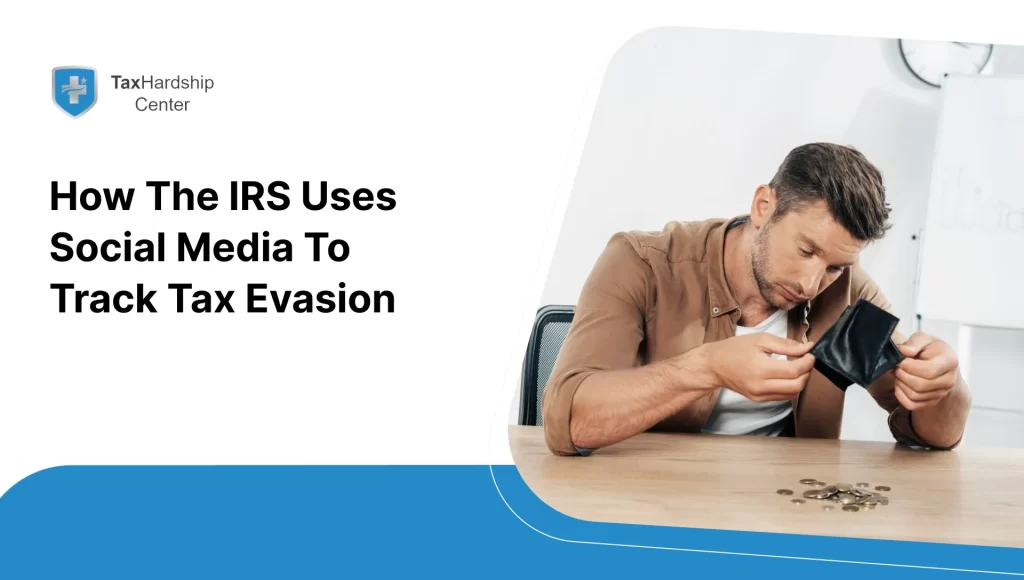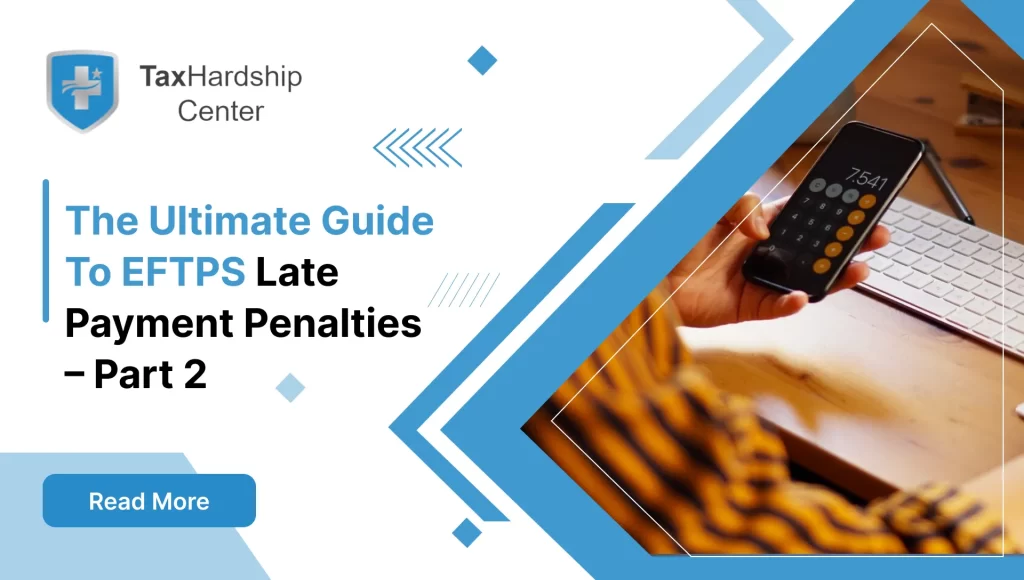As the tax season gears up, families nationwide are looking into one of the most discussed benefits in recent times—the Child Tax Credit (CTC). This comprehensive guide will delve into everything you need to know about the CTC, from basics to expansion, and how you might be affected.
What is the Child Tax Credit?
The Child Tax Credit is a tax benefit designed to help working families offset the cost of raising children. By reducing a family’s tax liability, this tax credit provides financial relief directly related to dependent care expenses.
Experience Relief with Tax Hardship Center’s Expert Services
Harness the power of hassle-free assistance with the Tax Hardship Center, eliminating sleepless nights and cumbersome tax processes with our adept team’s personalized support. Our confidence shines through with a 14-day money-back guarantee, ensuring you’re satisfied, or we refund your investment, prioritizing your tranquility. Take the first step towards tax resolution with a no-cost consultation, offering customized guidance and peace of mind. Enjoy the convenience of nationwide coverage, as our top-tier tax relief services extend to every state, bringing quality and expertise directly to you, wherever you may be in the US.
How Much is the 2024 Child Tax Credit?
The Child Tax Credit amount 2024 is flexible and could be subject to legislative changes. However, as things currently stand, the CTC amounts have transformed compared to previous years. The American Rescue Plan Act (ARPA) of 2021 offered a temporary enhancement to the CTC, which included increased credit amounts and eligibility for advance monthly payments. This provided unprecedented support to eligible families, aiming to mitigate the financial challenges many faced during the pandemic.
For 2024, the amounts provided by the ARPA may revert to pre-legislation levels unless Congress enacts further changes. Under the ARPA, the credit amounts were up to $3,600 per child under age six and up to $3,000 per child ages 6 through 17 for the tax year 2021. The credit was also fully refundable for the year, which meant taxpayers could receive the credit as a refund even if they owed no tax.
As the provisions of the ARPA were temporary, families should be prepared for the possibility that the Child Tax Credit could return to its previous level of up to $2,000 per child qualifying for the credit. This is unless new legislation extends the improvements or introduces a different structure to the credit.
Child Tax Credit 2024: Future Prospects
The future of the Child Tax Credit in 2024 remains a topic of discussion among policymakers. As of my knowledge cutoff, no permanent changes have been made to the provisions enhanced by the ARPA, but ongoing economic conditions and political priorities could lead to further updates.
Taxpayers must stay vigilant for legislative updates affecting the CTC’s credit amounts and eligibility rules. These could include adjustments for inflation, modifications of the number of qualifying children, or changes to the credit’s refundability.
Additionally, while the CTC’s advance payments provided half of the total monthly credit during the latter half of 2021, whether this feature will continue in future years is still being determined. The periodic advance payments were a significant boon for many families’ monthly budgets, and whether this approach will be retained, modified, or discontinued is a critical aspect to monitor.
Child Tax Credit Expansion: What the Tax Deal Could Mean for You
An expansion of the Child Tax Credit could substantially impact household finances. The primary benefit of such an expansion is an increase in the credit amounts, directly reducing the tax you owe. For many families, this could mean paying less taxes or receiving a larger refund when filing their tax returns.
Beyond an increase in the amount of the credit, expansion could include the reinstatement or introduction of advance payments. This system, previously implemented as part of the American Rescue Plan, involved the IRS distributing half of the estimated annual CTC amount in monthly payments to eligible families. Such a structure provides ongoing financial support throughout the year, helping to cover expenses related to raising children, such as food, clothing, health care, and education.
Receiving monthly CTC funds can be a game changer for many households. It can mean more regular cash flow to cover everyday expenses and can help families avoid debt or financial instability. If a tax deal includes these provisions, it will be an essential factor for families to consider as they manage their budgets.
Should I File Taxes Now or Wait if I Claim the Child Tax Credit?
Timing your tax filing correctly can be an exercise in strategy, especially when you’re expecting to benefit from credits like the CTC. One common question is whether to file immediately or wait. If you are eligible for the Child Tax Credit and especially if you are anticipating a tax refund, filing your taxes as soon as you have all the necessary documentation is generally advisable.
Filing early has several advantages:
- Quicker Access to Refunds: The sooner you file, the sooner you can get your refund. This can improve your financial situation by providing funds to pay off debt, save, or invest.
- Avoiding Delays: Filing early can help you avoid the rush closer to the tax deadline, which means less chance of processing delays from the IRS.
- Preventing Fraud: Early filing reduces the opportunity for potential identity thieves to file a fraudulent return in your name.
Remember, even if the CTC is expanded and includes advance payments, filing your tax return promptly remains beneficial.
How Quickly Could the IRS Implement the Child Tax Credit Expansion?
If new legislation passes expanding the CTC, timing is a practical consideration. The IRS must update its processing systems to handle changes to the credit amounts and the logistics of advance payments. Historically, the IRS has demonstrated an ability to roll out such changes with relative speed, as seen with the quick implementation of the advance payment system in 2021.
It’s worth noting that while the IRS can move fast, exact timelines may vary based on the complexity of the changes and other factors, such as available resources and current workload. Taxpayers should stay informed and adjust their expectations accordingly. The IRS will often provide guidance and updates on the rollout of new provisions.
Requirements: Who Qualifies for the Child Tax Credit?
Eligibility for the CTC is based on several factors that can change with new legislation. Generally, you must have a qualifying child or dependent under a certain age and meet specific income limits to qualify. The dependent must also have a valid Social Security number and be a US citizen, national, or resident alien.
Income limits determine the phase-out rate of the credit—meaning that the credit amount decreases as your income increases beyond a certain threshold. These thresholds can be adjusted yearly or modified by tax credit expansions or other legislation.
How to Claim the Child Tax Credit in 2024
To claim the Child Tax Credit for 2024, you must complete the appropriate tax forms when filing your federal income tax return. Here’s a step-by-step guide to help you through this process:
1. Gather Documentation: Collect all necessary documentation regarding your dependents, such as Social Security numbers and dates of birth.
2. Review Eligibility Criteria: Ensure that your income levels and dependent qualifications meet the CTC requirements for 2024. These requirements can change based on new tax legislation, so staying informed is essential.
3. Choose a Filing Method: Decide whether you will file taxes electronically or by mail. Electronic filing (e-filing) is faster and more secure.
4. Free Filing Options: If you meet certain income thresholds, you may be eligible for free tax filing assistance through IRS Free File programs or tax software partners offering free versions of their services.
5. Fill Out the Forms: Complete the necessary tax forms, including Form 1040, the U.S. Individual Income Tax Return, and Schedule 8812, Credits for Qualifying Children and Other Dependents, if required.
6. Tax Tips for Maximizing Credits: Tax credits like the CTC can be complicated, so consider consulting expert tax tips or seek personalized advice to ensure you’re claiming the total credit amount you’re eligible for.
7. File Your Return: Submit your tax return by the tax deadline, typically April 15th, unless it falls on a weekend or holiday, in which case it would be the next business day.
8. Confirmation: After filing, make sure to receive confirmation that the IRS has accepted your tax return.
When to Expect Your Child Tax Credit Refund
After successfully claiming the CTC and filing your tax return, you’re likely looking forward to receiving your refund. The IRS usually issues refunds within 21 days of receiving an e-filed tax return. However, it’s important to note that the following factors can affect the timing:
- Accuracy of Information: Ensure all information on your tax return is correct. Errors can delay the processing of your return and the issuance of your refund.
- Filing Method: E-filing typically results in faster processing than paper filing.
- Additional Reviews: Some returns are selected for further reviews, which can extend processing times.
- Debt Offsets: If you have outstanding federal or state debts, part or all of your refund may be used to pay them off.
To track your refund status, the IRS provides the Where’s My Refund? Tool on their website and through the IRS2Go mobile app.
Consequences of a Child Tax Credit Error
Accuracy is paramount when claiming the CTC because discrepancies can disrupt the refund process. Here’s what might happen if mistakes are made:
- Refund Delays: The most common consequence of a CTC error is delayed handling of your tax return, which postpones your refund.
- Corrections Required: The IRS may contact you to correct the error, which involves additional paperwork and time.
- Penalties: If errors are deemed to be due to negligence or intentional disregard for the rules, penalties could be assessed.
To mitigate these issues:
- Double-Check Information: Review your tax return for accuracy before submitting it.
- Consult Professionals: Tax professionals can ensure that your returns are error-free and help you navigate complex tax situations.
Key Takeaways
- The Child Tax Credit is a vital source of tax relief for families, but credit amounts and qualifications can fluctuate yearly.
- The expanded CTC under the American Rescue Plan boosted support for families but may not continue indefinitely.
- Taxpayers should utilize free filing options, professional tax advice, and IRS resources to maximize their credit.
- Keep abreast of legislative changes impacting the CTC’s framework and eligibility criteria.
Conclusion:
Navigating the Child Tax Credit landscape demands vigilance and understanding, especially amidst potential legislative changes. While the CTC has provided crucial support for families, its future remains uncertain. Staying informed and utilizing available resources will empower you to maximize this essential tax benefit for your household’s financial well-being.
Why Tax Hardship Center?
1. Hassle-Free Assistance:
Say goodbye to sleepless nights and endless tax-related stress. At the Tax Hardship Center, we believe in simplifying the complex. Our team of experts is dedicated to guiding you through every step of the process, ensuring that your tax concerns are met with precision and care.
2. 14-Day Money Back Guarantee:
We’re so confident in our ability to ease your tax worries that we offer a 14-day money-back guarantee. If, for any reason, you’re not satisfied with our service, we’ll gladly refund your investment. Your peace of mind is our top priority!
3. Free Consultation:
Are you curious about how we can transform your tax experience? Book a free consultation now! Our team will assess your situation, answer your questions, and provide free insights tailored to your needs.
4. Nationwide Coverage:
No matter which corner of the United States you call home, the Tax Hardship Center covers you. We proudly serve all 50 states, bringing our expertise to your doorstep. Wherever you are, our commitment to excellence follows.
FAQs:
1. Should I File Taxes Now or Wait if I Claim the Child Tax Credit?
Filing early can expedite your refund and safeguard against fraud, which is particularly advantageous if you anticipate a refund.
2. How Quickly Could the IRS Implement the Child Tax Credit Expansion?
The IRS has historically acted swiftly to implement changes, but timelines can vary based on complexity and resources.
3. Requirements: Who Qualifies for the Child Tax Credit?
Qualification depends on factors like income and dependent status, subject to potential changes with new legislation.
4. How to Claim the Child Tax Credit in 2024?
Follow a step-by-step process, ensuring accurate documentation, eligibility review, and timely submission of tax forms.
5. When to Expect Your Child Tax Credit Refund?
Refunds are typically issued within 21 days of e-filing, but accuracy, filing method, and reviews can affect timing.








